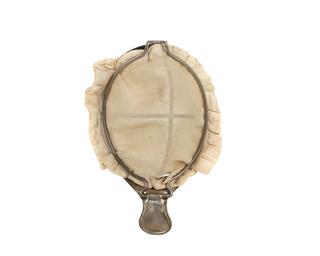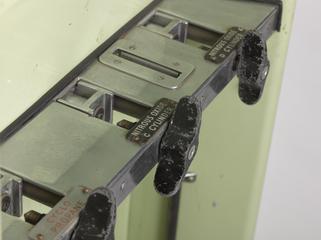




Gag, mouth, Fergusson's with Acklands parallel tooth plates, plated steel and rubber, by Dental Manufacturing Co., England, 1904-1935
Mouth gags are used to keep a patient’s mouth open during surgery. If anaesthetics are given through a tube placed down the windpipe (trachea), it is important that the patient does not bite down on the tube and stop the flow of anaesthetic. The gag may also have been used to keep the mouth open during surgery – for example when tonsils were being removed.
The gag was originally designed by William Fergusson (1808-77), a British surgeon, in 1876. The grooved jaws designed to fit against the teeth of this mouth gag were added by William Robert Ackland (1863-1949), a British dentist. This type of mouth gag is still used today. Our example was made by the Dental Manufacturing Co.
Details
- Category:
- Anaesthesiology
- Collection:
- Sir Henry Wellcome's Museum Collection
- Object Number:
- A613149
- Materials:
- steel (plated) and tooth plate covers, rubber
- Measurements:
-
overall: 52 mm x 190 mm x 70 mm, .19kg
- type:
- mouth gag




